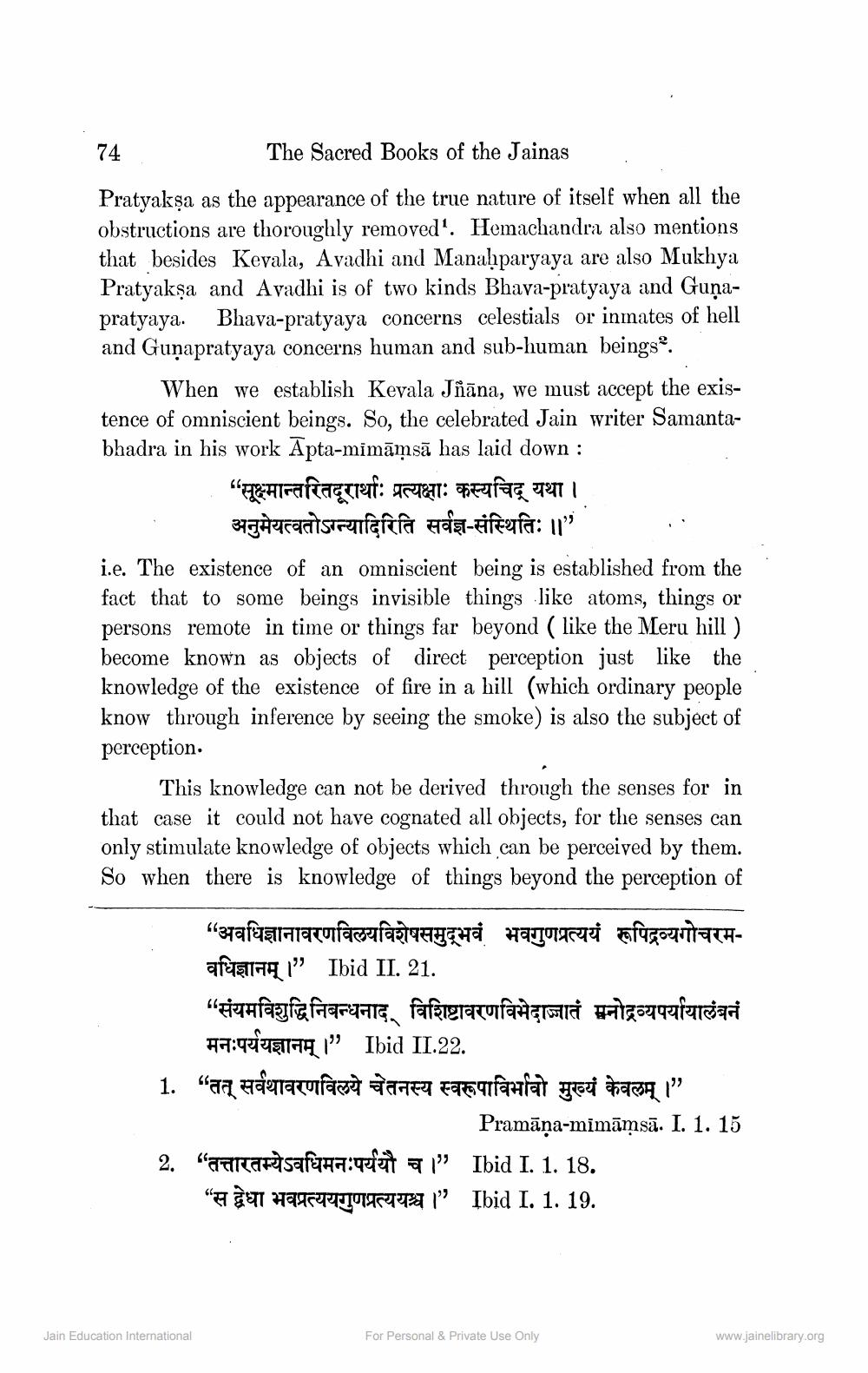________________
74
The Sacred Books of the Jainas Pratyaksa as the appearance of the true nature of itself when all the obstructions are thoroughly removed'. Hemachandra also mentions that besides Kevala, Avadhi and Manałparyaya are also Mukhya Pratyaksa and Avadhi is of two kinds Bhava-pratyaya and Guņapratyaya. Bhava-pratyaya concerns celestials or inmates of hell and Guņapratyaya concerns human and sub-human beings.
When we establish Kevala Jñāna, we must accept the existence of omniscient beings. So, the celebrated Jain writer Samantabhadra in his work Apta-mīmāṁsā has laid down :
"सूक्ष्मान्तरितदूरार्थाः प्रत्यक्षाः कस्यचिद् यथा ।
अनुमेयत्वतोऽग्न्यादिरिति सर्वज्ञ-संस्थितिः ॥" i.e. The existence of an omniscient being is established from the fact that to some beings invisible things like atoms, things or persons remote in time or things far beyond ( like the Meru hill ) become known as objects of direct perception just like the knowledge of the existence of fire in a hill (which ordinary people know through inference by seeing the smoke) is also the subject of perception.
This knowledge can not be derived through the senses for in that case it could not have cognated all objects, for the senses can only stimulate knowledge of objects which can be perceived by them. So when there is knowledge of things beyond the perception of
"अवधिज्ञानावरणविलयविशेषसमुद्भवं भवगुणप्रत्ययं रूपिद्रव्यगोचरमafogliat" Ibid II. 21. “संयमविशुद्धिनिबन्धनाद, विशिष्टावरणविभेदाज्जातं मनोद्रव्यपर्यायालंबनं
HA:QU1194, 1" Ibid II.22. 1. "aq udaracuamet TAFT Fastpaulat gert 1994, "
Pramāņa-mīmāmsā. I. 1. 15 2. "Tacari Sarawa:pelet 1" Ibid I. 1. 18.
"IT SETT HAAFITIUUTITTI" Ibid I. 1. 19.
Jain Education International
For Personal & Private Use Only
www.jainelibrary.org




